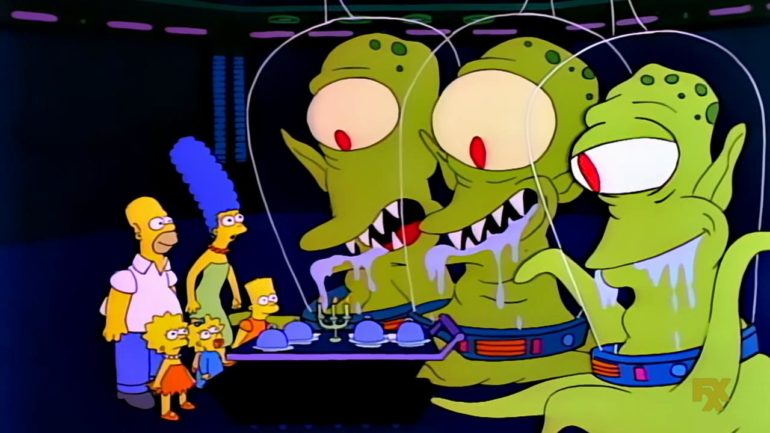Ever since Season 2, the Treehouse of Horror Halloween episodes have been an annual tradition for The Simpsons, and also an annual highlight of the current season, with 2019 set to have the 30th one air, towards the start of Season 31. These non-canon trilogies of darker tales that usually parody science-fiction and horror (including multiple episodes of The Twilight Zone) have become such a staple of the series that they inspired a video game, while the writers have even brought their trademark aliens Kang and Kodos into the main series on occasion. As an annual tradition which has been going on for longer than many Simpsons fans have even been alive, some of the Treehouse of Horror episodes are going to be better than others, so let’s take a look at the ten best Treehouse of Horror episodes.
10. Treehouse of Horror XII
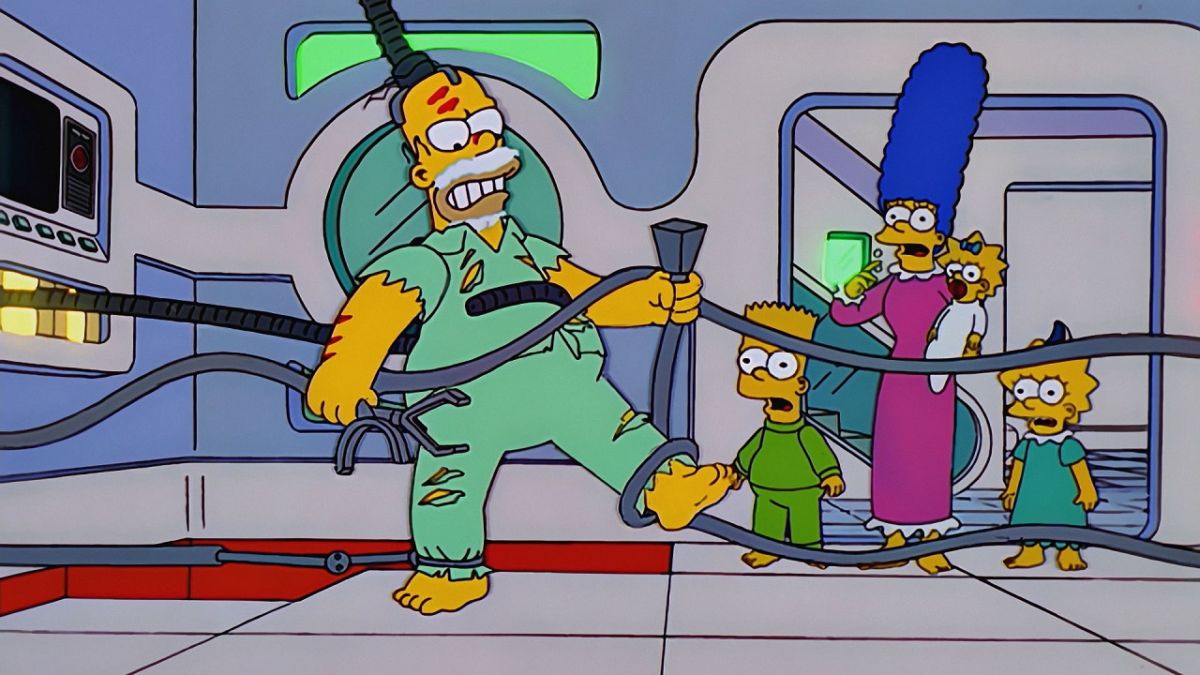
The introduction to this episode sets the tone with a darkly comical slapstick piece that sees Smithers die trying to put up Mr. Burns’s Halloween decorations, and darkly comical is exactly what this episode is. Dark humour is most prevalent in first segment ‘Hex and the City’, which sees Homer be cursed by a gypsy. While the segment has a fair bit of slapstick and a number of witty verbal gags, there is a dark tone to it all that is best exemplified in the most surreal moment – Homer strangles Bart, only for the boy’s neck to stretch several feet. ‘Hex and the City’ is also the most visually creative segment as all manner of fantasy creatures are depicted in Homer’s hunt for a Leprechaun and its subsequent wedding to a gypsy.
The underlying dark humour is in the middle segment ‘House of Whacks’, in which the Simpson home becomes technologically advanced, and the A.I. controlling everything (voiced brilliantly by Pierce Brosnan) develops a crush on Marge. However, ‘House of Whacks’ is the most cleverly written segment, as it plays brilliantly to man’s fear of technological advancement, specifically A.I, the Brosnan-voiced system’s malevolence and casual approach to murder evoking the HAL 9000 from 2001: A Space Odyssey. As for the final segment ‘Wiz Kids’, this is a light-hearted and altogether enjoyable parody of Harry Potter, with Mr. Burns on top sinister form as the Dark Lord Montymort, accompanied by his loyal serpent Slithers. However, there is a rather dark undertone to Montymort’s evil schemes, while a devastated Slithers’s consumption of his master’s corpse at the end is the most unsettling piece of imagery from this entire special.
9. Treehouse of Horror X

Despite having adult humour and approaching serious issues ever since its first season, The Simpsons is ultimately family viewing, and one thing which works really well for the tenth Treehouse of Horror episode is that it has something for everyone. The first segment ‘I Know What You Diddly-Iddly-Did’ is an enjoyable parody of the I Know What You Did Last Summer films, which would please horror fans, not least because of its spooky visual quality, with much of the episode being set in/near a dark forest. Plus, it will satisfy long-term Treehouse of Horror fans by being another segment that gives a dark edge to Ned Flanders, as the too-good-to-be-true neighbour turns into a werewolf.
The middle segment ‘Desperately Xeeking Xena’ is a fun one which is much more a piece of family viewing, as Bart and Lisa become superheroes Stretch Dude and Clobber Girl, while Lucy Lawless’s guest appearance as Xena, taken hostage by Comic Book Guy, will surely please the nerd community. The final segment ‘Life’s a Glitch, Then You Die’ is the most ingenious of the lot, though, playing to paranoias surrounding Y2K by depicting the world destroyed by technology backfiring at the start of the 21st Century – mere weeks away for the episode’s original audience. This segment, however, also works well today as the decision that the only people worthy of being evacuated from Earth are celebrities speaks into today’s obsession with celebrity culture, which has peaked in recent years thanks to social media.
8. Treehouse of Horror VIII
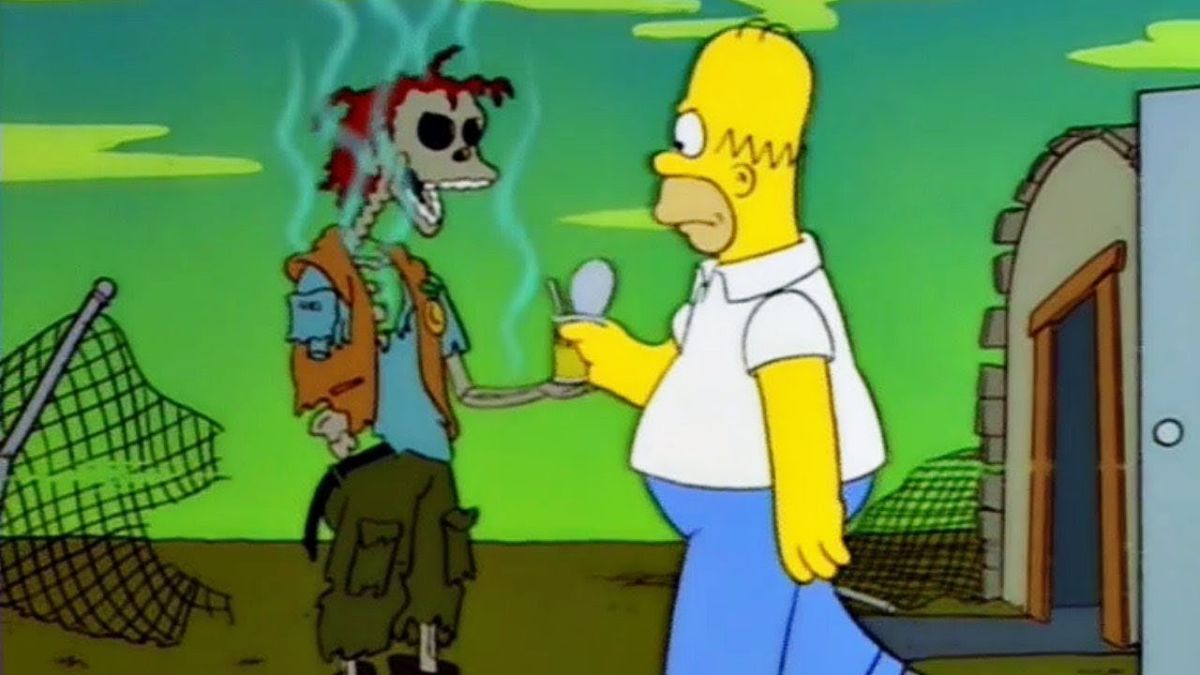
Opening with quite an amusing middle-finger to censorship that depicts a Fox Censor being stabbed in the back, which itself was tough to get through the real-life censors, Treehouse of Horror VIII is a brilliant exercise in surreal imagery, which is prominent in each of the three segments. The first segment ‘The HΩmega Man’ sees Mayor Quimby make a “frog’s legs” joke about France (ah, The Simpsons, never a series to shy away from stereotypes). France fires a nuclear missile at Springfield, killing everyone except for Homer. The brilliance of this segment is that, despite the apocalyptic imagery surrounding him (namely the countless skeletons), Homer does not go into a state of terror or despair, instead enjoying being the only survivor by having an entire cinema screen to himself (sort of) and dancing naked in the church. The surreal imagery, however, comes when some of his friends return as mutants, and over 20 years later this can be seen as foreshadowing an entire race that would play a prominent supporting role in the future Matt Groening series – Futurama.
The middle segment, ‘Fly vs. Fly’, starts with Homer buying a matter transporter from Professor Frink and ban the kids from using it. Never one to obey his parents, Bart enters into it with a fly, hoping to become a mutant superhero…but it does not go according to plan. Surreal imagery is most prevalent in this segment, notably when Snowball II and Santa’s Little Helper get their matter spliced by the transporter and become two unsettling mutant pets. Most surreal and unsettling of all is an enlarged fly’s head on Bart’s body, imagery which is the stuff of nightmares. Nevertheless, this is the most energetic and humorous segment, with Homer’s self-indulgent use of the transporter being hilarious, while the segment’s frantic climax boasts some great slapstick.
The third, ‘Easy-Bake Coven’, is set during the 17th Century witch-burnings and sees Marge, Patty and Selma be unveiled as witches. Although making Patty and Selma witches is predictable, it is nice to see a parody of a familiar story (many of us studied The Crucible in school), and the surreal images of Wiggum, Eddie and Lou being transformed into a gopher, snowman and fairy-princess respectively are absurdly brilliant.
7. Treehouse of Horror III
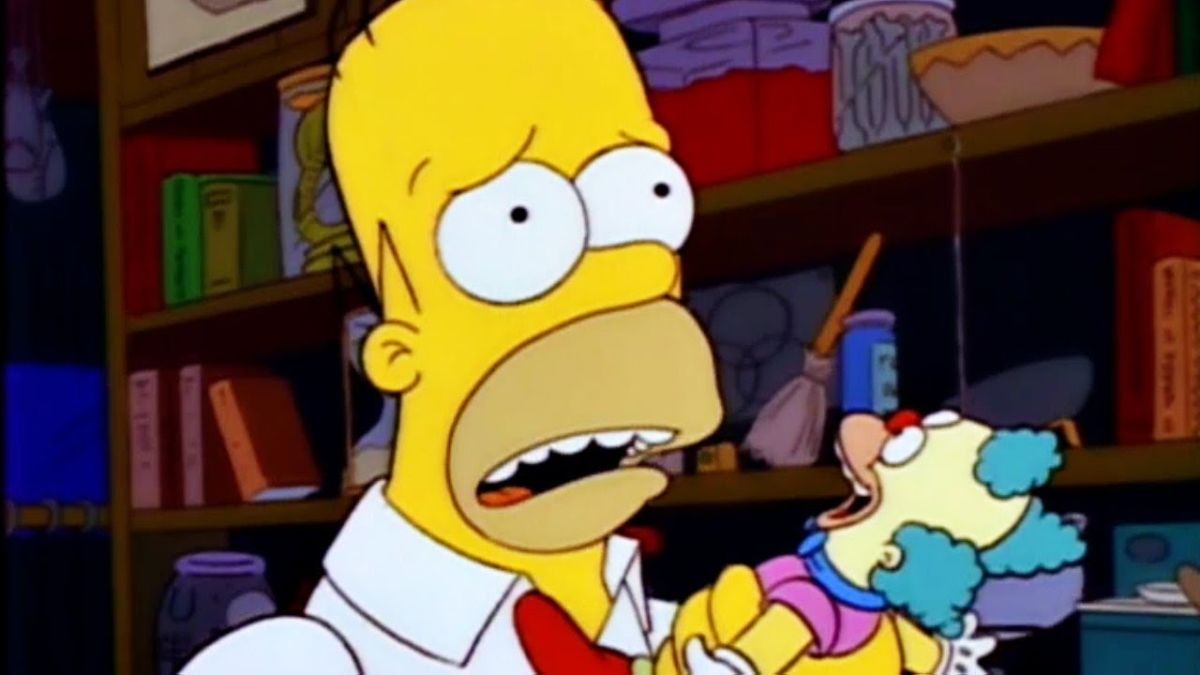
Reusing the framing technique of each segment being a story told by a different family member from the original Treehouse of Horror, Lisa, Grampa and Bart each parody a different popular material. Lisa’s story, ‘Clown Without Pity’, sees Homer buy Bart a new Krusty doll, only for the doll to turn out to be a cursed, evil doll which tries to kill Homer. A hilarious parody of several films, though most notably Child’s Play and Gremlins, ‘Clown Without Pity’ cleverly plays to two common childhood phobias at once – clowns and creepy dolls. As such, despite great energy and witty gags, it is definitely one of the more adult segments to date, while Patty Bouvier saying “There goes the last lingering threat of my heterosexuality” as a terrified, naked Homer runs past foreshadows her coming out as a lesbian in Season 16.
Grampa’s story, ‘King Homer’, is a fun parody of King Kong, with Homer as the legendary giant ape and Marge as the human who piques his interest. ‘King Homer’ is a segment which will appeal in particular to Simpsons fans who love classic cinema, as not only does it follow the basic formula of King Kong quite loyally, but it is also in black-and-white, adding an extra layer of authenticity to this tribute to the 1933 classic. And while the concept of Homer as a giant ape might seem a little obvious, it’s also a clever callback to the Season 1 episode The Call of the Simpsons, in which Homer got mistaken for the mythical ape Bigfoot.
Finally, Bart’s story, ‘Dial “Z” for Zombies’, parodies the Living Dead films as Bart and Lisa accidentally start the zombie apocalypse when their efforts to resurrect Snowball I with black magic backfire. Despite the dreary visual quality of the animation, this supernatural-horror segment is actually quite a fun way to wrap up the episode, as it has some good gags about Homer’s lack of intelligence, and culminates in an energetic, farcical scene in which a shotgun-wielding Homer leads the family through the hordes of zombies. And nothing prepares you for the amusement and surprise at seeing Shakespeare, Einstein, and George Washington as zombies.
6. Treehouse of Horror II
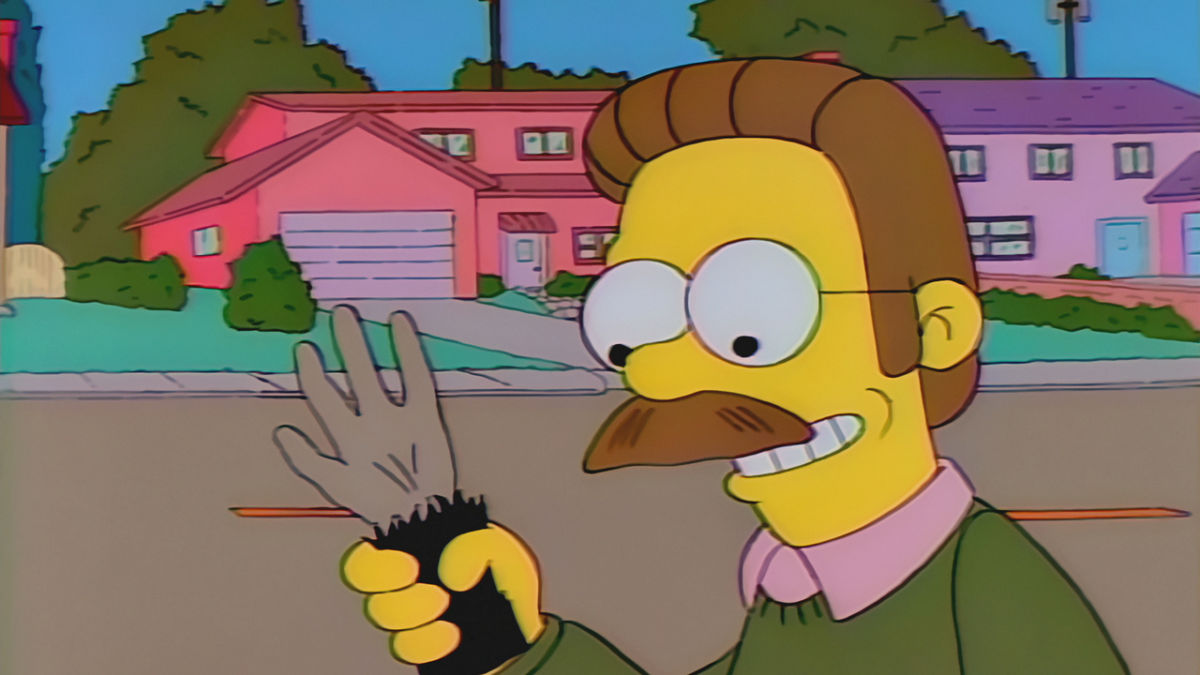
Treehouse of Horror II is the only Halloween special whose trilogy of segments are not each titled within the episode, though this is with good reason. On Halloween night, Homer, Bart and Lisa ignore Marge’s warning that eating too much candy will cause them to have nightmares, which does indeed come true as each segment is one of their nightmares. The first segment is Lisa’s nightmare, in which Homer buys a cursed monkey paw in Morocco that grants four wishes. While the family initially benefits from Bart’s wish for them to be rich and famous (before the public eventually gets bored of them), Lisa’s wish for world peace results in an alien invasion led by Kang and Kodos, which brilliantly establishes them as the malevolent threat that they would go on to be in future Halloween specials.
In the middle segment, Bart’s nightmare, he has bizarre powers which cause the entirety of Springfield to live in fear of him. Unlike the other sequences, this one boasts a lot of absurdly surreal imagery – Snowball II ends up looking like concept art from The Magic Roundabout, while Homer becoming a jack-in-the-box is brilliant, if unsettling to look at. And in the final segment, Homer’s nightmare, the Simpson patriarch ends up working as a gravedigger – but when he falls asleep in an open grave, Mr. Burns mistakes him for a corpse and removes his brain to power his new robot. This segment feels the most like a horror film of the lot, thanks to the excellent use of eerie low lighting, shadows and silhouettes by the animators, which (when coupled with the subject matter) makes for a very good parody of the Frankenstein films of the 1930s. Plus, interestingly enough, it is also the most laugh-out-loud hilarious thanks to Burns’s frustrated and (later) disappointed reactions to the Robot-Homer’s lazy and clumsy behaviour.
5. Treehouse of Horror IV
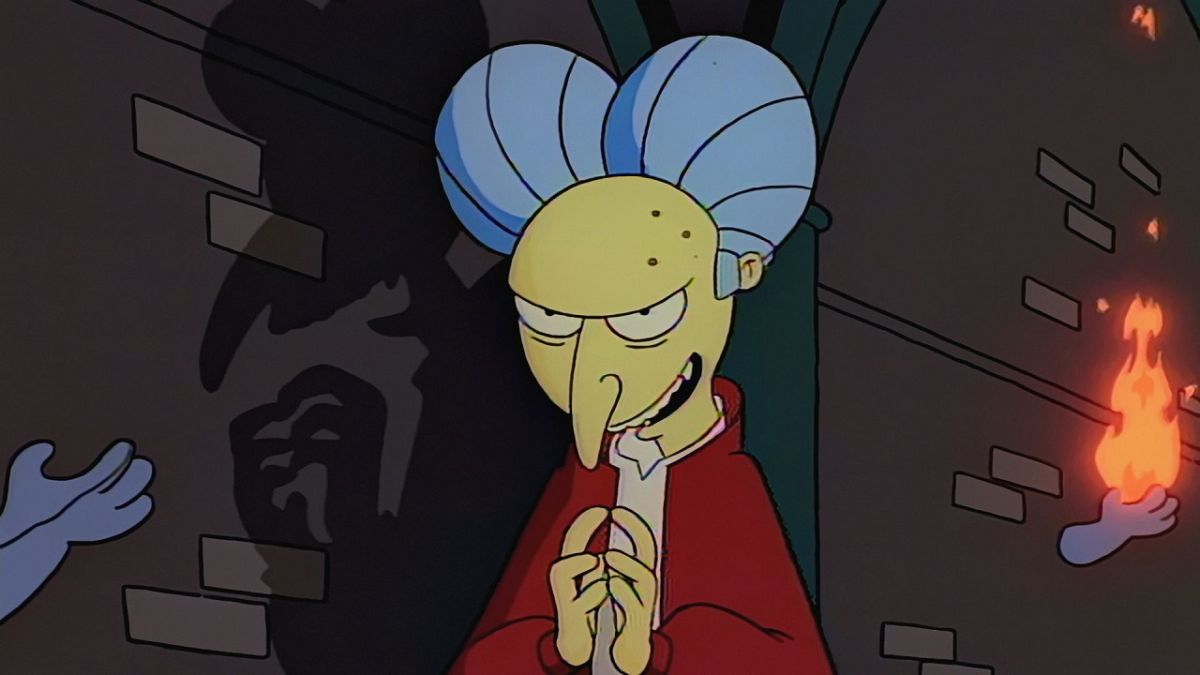
Each segment in the fourth Treehouse of Horror special is introduced by Bart as he walks through an art gallery, choosing a different painting as the starting point for each story, in a clever nod to the power of art and personal interpretations of it. Segment one, ‘The Devil and Homer Simpson’, sees Homer trade his soul to the devil for a doughnut, before having a legal battle to determine who his soul belongs to. This segment boasts a lot of what The Simpsons has generally been renowned for, with witty gags centred around Homer’s gluttony, political humour (one of a number of digs made at historical villain Richard Nixon), and a heartfelt moment that looks at the strength of Homer and Marge’s love for each other. Like many Treehouse of Horror segments, there is surreal imagery (the Doughnut Head), but the genius of this segment is making Ned Flanders the Devil. It is such an inspired contrast to the usually seemingly perfect Flanders, and became the first of several Treehouse of Horror segments that would depict a darker, more sinister side to the beloved supporting character.
Segment two, ‘Terror at 5½ Feet’, is a fun parody of The Twilight Zone episode Nightmare at 20,000 Feet, in which Bart sees a gremlin on the side of the school bus that nobody else does, having earlier had a nightmare that the school bus would crash that morning, killing everyone on board. Boasting real energy and a sense of darkness (namely in the creation of a torrential rainstorm outside by the animators), this segment is a clever reflection of the human psyche. Bart’s conviction that the gremlin is going to cause the bus to crash, coupled with the ambiguity as to whether the gremlin is even there, is a great reflection of the anxiety and degree of paranoia which nightmares can inflict on people, and also of the need that we all have to make sense of something that goes against our better judgement and rationale. The final segment, ‘Bart Simpson’s Dracula’, sees Bart get turned into a vampire by Mr. Burns. Burns being a 19th Century aristocratic vampire is conceptually brilliant and fits the character very well, while the dimly-lit, eerie visual quality of the interior scenes wonderfully evokes the most successful Dracula adaptations from the 1930s and 1990s. Plus, Bart’s part in dooming himself to a vampire bite is highly amusing and totally in-keeping with his character, making this a nice, simple segment to round out the special with.
4. Treehouse of Horror VII

Treehouse of Horror VII is among the more timely Halloween specials, with political comments prevalent in two segments and the episode airing only a month before the 1996 Presidential Election, making this one of the best and most different Treehouse of Horror episodes. The hilarious opening sees Homer running on and off screen, screaming after setting himself on fire while trying to light a jack-o-lantern, setting the tone for a Halloween episode in which physical comedy is prevalent in all three segments. The first segment, ‘The Thing and I’, sees Bart and Lisa become terrified by strange noises in the attic, before later discovering that Bart’s evil twin Hugo is kept chained up there. With the revelation not being until the second half, the first half of this segment bears a real sense of mystery, playing brilliantly on fear of the unknown by showing us everything from Bart’s perspective. Hugo’s reunion with Bart is itself rather chilling, thanks to the unsettling imagery of an unhinged child and the absurd imagery of the pigeon-rat he has made by sewing the two vermin together. The latter of these images boasts some simple but amusing physical comedy, although how Hugo is eventually stopped is a daft but very funny moment of cartoon violence.
The second segment, ‘The Genesis Tub’, is where politics comes into play. When Bart shocks Lisa, she accidentally shocks her science project – a tooth in a small tub of cola – and in doing so creates an entire, quickly evolving civilisation, who come to see her as God and Bart as the devil. The animation is at its finest in this segment, boasting the most intricate and rich of small details within the titular Genesis tub as the civilisation evolves. There’s a clear satire of organised religion in the way the civilisation piously worships Lisa as their creator, but within this is also a clever political comment on how civilisation views a leader worthy of respect and praise as one of its greatest needs. The segment is at its most hilarious when the tiny civilisation sends a fleet of tiny spaceships to attack Bart one night in a thrilling scene with shades of Star Wars.
The final segment, ‘Citizen Kang’, sees Kang and Kodos kidnap Presidential candidates Clinton and Dole, disguise themselves as the two politicians and replace them in the Presidential Elections, all of which is witnessed by Homer. The hilarious physical slapstick from the kidnapping scene pales in comparison to the biting satire of an American Presidential race, which provides one of a number of occasions where The Simpsons has poked fun at Bill Clinton, and a comment on how American society views having a President as a necessity, even if that means that somebody unsuitable will get the job (“Don’t blame me, I voted for Kodos”).
3. Treehouse of Horror
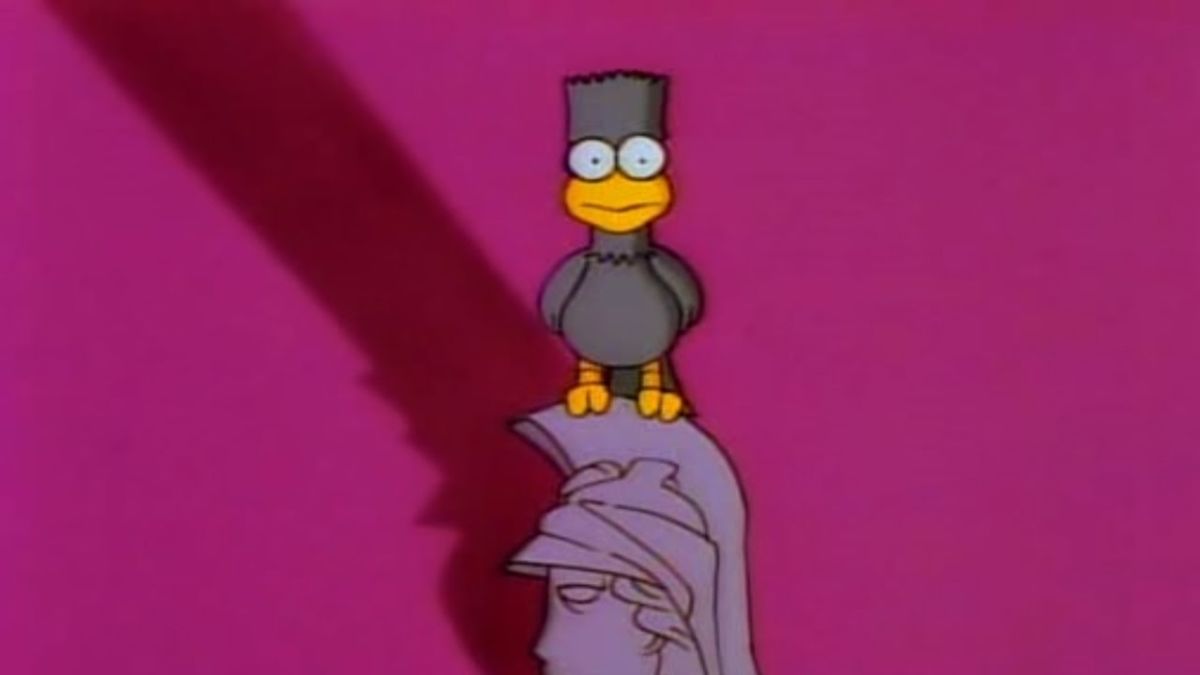
Here it is, the one which started it all back in October 1990! Within the framing technique of the Simpsons kids telling each other scary stories, The Simpsons’ team of screenwriters gave viewers their first taste of what would become a long-running tradition with three different, yet equally good segments. The first segment ‘Bad Dream House’ is a parody of the horror film Poltergeist, in which the Simpson family move into a house with an evil presence, the source of which is a Native American burial ground in the basement. With quite a spooky visual quality and an eerie tone this segment would no doubt have given goosebumps to viewers who had tuned in for their weekly dose of family-based sitcom. Yet there is still humour, most notably when the house decides to destroy itself rather than be occupied by the Simpsons (an amusing addition to the running gag that The Simpsons are the family from Hell), while the segment also utilises the established family dynamic, as Marge is once again a protective, headstrong matriarch who serves as a voice of reason to her husband and children.
The middle segment, ‘Hungry are the Damned’, is the most significant segment of any Treehouse of Horror episode. In a spoof of The Twilight Zone episode To Serve Man, the Simpson family are beamed aboard the spaceship of alien siblings Kang and Kodos, and their chef Serak. That is why this segment is so significant, because it introduces Kang and Kodos, who became iconic staples of the Treehouse of Horror episodes, going on to appear in each one. Interestingly, they are depicted here as benevolent, for the first and last time, which creates a sense of tension as they seem too good to be true, but also reflects the fact that the screenwriters would no doubt have been playing it safe given that this episode was Treehouse of Horror’s first outing. The final segment, ‘The Raven’, is not a spoof but a dramatisation of Edgar Allen Poe’s classic narrative poem, with Bart as the Raven. The entire poem is read in this segment by none other than James Earl Jones, whose rich, deep tones make it a highly engaging segment which could be appreciated just as much if it played on the radio. Poetry has never been so enjoyable to see on television, and this segment beautifully rounds off a great episode that proved to be a successful trial run for The Simpsons Halloween specials, setting the precedent for decades to come.
2. Treehouse of Horror VI

While a trilogy of parodies is what is generally found in a Treehouse of Horror episode, the sixth Halloween special opts for two clear parodies, followed by what remains to be quite possibly the most surreal thing in the history of The Simpsons. The first segment ‘Attack of the 50-Foot Eyesores’ sees Homer steal the giant metal doughnut from the hand of the Lard Lad statue, which causes all of Springfield’s giant advertising statues to come to life and terrorise the town. ‘Attack of the 50-Foot Eyesores’ is a terrific parody of various low-budget 1950s’ science-fiction films which depicted giant creatures menacing cities. There is real energy and plenty of slapstick in this segment, as well as a hilarious moment in which Chief Wiggum shoots the captain of the high school basketball team, having mistaken him for a monster. The segment ends with the advertising statues dying after Lisa and Paul Anka get the town to stop looking at them, a very clever comment on society’s fascination with advertising and consumerism.
The middle segment ‘Nightmare on Evergreen Terrace’ parodies the Nightmare on Elm Street franchise and sees Groundskeeper Willie killing the kids of Springfield Elementary by getting to them in their dreams. Of the three segments, this one certainly features the most brutal violence and haunting imagery – forget how Willie keeps trying to murder the kids, it’s the imagery of him as a charred, smoking skeleton in a flashback that will stay with you. If younger viewers were not already nervous about the prospect of nightmares, then they surely would be by the end of this segment. The final segment, ‘Homer3’, sees Homer try to hide from Patty and Selma, only to end up in a mysterious new world in which everything is in 3-D. This is where we find the most surreal imagery in the series’ history, as Homer and everything around him is created with quite basic CG-animation, in an episode released a month before Toy Story redefined animated filmmaking. While not scary per se, the surreal imagery is a bit unsettling and remains so to this day, partly because of its lack of texture, but mainly because this entire segment plays on fear of the unknown and the seemingly inexplicable, making this one of the most memorable Treehouse of Horror segments of all time.
1. Treehouse of Horror V

Aside from the quality of the individual segments, Treehouse of Horror V is the best of the Halloween specials for three reasons. Firstly, it is the first special to not have an external introduction to each segment, instead going straight in and thereby having tighter execution and better pacing which would set the precedent for future specials. Secondly, it has a simple yet hilarious running gag seen through all three segments, in which Groundskeeper Willie is axed in the back while trying to save the Simpson family. And finally, it raised the bar for visual creativity and violent content, with executive producer David Mirkin deliberately placing more graphic violence in the episode in response to complaints from the censors, stating that Halloween should be “scary and fun”.
Of course, the three segments themselves are all excellent with their own different merits. The first segment ‘The Shinning’ is a terrific parody of The Shining, featuring a hilariously absurd moment in which Homer goes crazy before scaring himself so much that he falls down the stairs and is knocked out. The screenwriters also do brilliant send-ups of some of The Shining’s most iconic moments, starting with the blood from the elevator scene: “That’s odd. Usually the blood gets off on the second floor,” Mr. Burns muses casually as a river of gore sloshes around their ankles. The middle segment, ‘Time and Punishment’, sees Homer accidentally travel back in time and, in doing so, alter the future, which he tries desperately time and again to fix. This segment is a fast-paced and very exciting few minutes indeed, and also the most visually creative and detailed, from the trip back to the dinosaur-era to the various realities, which include one where Ned Flanders is ruler of the world, one where the family are super-rich, and one where the house is a Bart-faced sphinx.
The final segment, ‘Nightmare Cafeteria’, is not a parody, rather it is an original tale about people becoming evil, which sees the Springfield Elementary staff turn cannibalistic in order to stop detentions becoming overcrowded. Playing on children’s underlying fear of teachers to quite an extreme level, ‘Nightmare Cafeteria’ is easily one of the darkest and most shocking things to come out of the Halloween specials. It is not just the fact that children are killed and eaten by teachers, but the fact that Lunchlady Doris feeds the processed remains of Uter and other children while Principal Skinner laughs as he drops hints of the truth to Bart and Lisa, in a moment of sadism which could make Mr. Burns look tame. Furthermore, the sight of Skinner, Doris, Mrs. Krabappel. and Miss Hoover pursuing Bart, Lisa, and Milhouse with blood on their clothes, drool coming from their mouths and kitchen utensils in hand is a very disconcerting piece of imagery. However, even that is not quite as brilliantly disconcerting as the musical number that ends the episode, which sees the Simpson family and Willie turned inside-out by a fog and dance in a graphically detailed and increasingly bloody sequence.
Some of the coverage you find on Cultured Vultures contains affiliate links, which provide us with small commissions based on purchases made from visiting our site.
